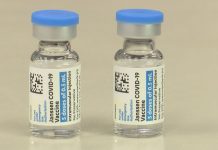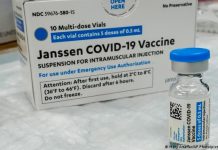In February 2021, the Food and Drug Administration (FDA) issued an emergency approval for the one-dose COVID-19 vaccine developed by Johnson & Johnson’s subsidiary company Janssen Biotech.
As with the two mRNA vaccines approved in December, the J&J vaccine has mostly mild side effects that can be managed with rest or an over-the-counter pain reliever.
So far, there have been fewer cases of allergic reactions to the J&J vaccine compared with the Moderna-NIAID and Pfizer-BioNTech vaccines, although J&J reported in February that two clinical trial participants had a severe allergic reaction after receiving its vaccine.
The FDA will continue to monitor the safety of the J&J vaccine as it’s rolled out to the American public.
Pain at injection site seen in many people
Before the FDA issued the Emergency Use Authorization (EUA) for the J&J COVID-19 vaccine, scientists from the agency reviewed dataTrusted Source from the company’s phase 3 clinical trials.
Dr. Bruce Y. Lee, executive director of Public Health Computational and Operations Research and professor of health policy and management at CUNY Graduate School of Public Health and Health Policy, says the side effects seen in those trials fall into two main categories.
“First are the injection site reactions. That’s usually pain, redness of the skin ,or swelling at the injection site,” he said.
“And then there are systemic side effects — flu-like symptoms such as fatigue, muscle aches, nausea, and potentially fever.”
Data from the clinical trials showed that around half of the people who received the vaccine had a local reaction. Pain at the injection site was the most commonly reported one, occurring in almost all cases.
Local side effects began on average 2 days after vaccination. Pain and redness lasted for 2 days on average and swelling for 3 days on average.
The onset and duration of local side effects varied, but less than 3 percent of people had side effects that lasted longer than 7 days.
Severe local side effects were uncommon, with less than 1 percent of people having severe pain. A small number of people had reddening of the skin near the injection site or swelling.
All of these local side effects were reported more often among people 18 to 59 years of age compared to those 60 years of age or older.
Headache and flu-like side effects common
Systemic side effects occurred in about 55 percent of people who received the vaccine.
The most commonly reported ones were headache, fatigue, and muscle pain, and in smaller numbers of people, nausea and fever.
These began on average 2 days after vaccination. Fatigue, headache, and muscle ache lasted on average 2 days. Nausea and fever lasted on average 1 day.
The onset and duration of systemic side effects varied, although fewer than 2 percent of people experienced systemic side effects lasting longer than 7 days.
Less than 2 percent of the systemic side effects were severe, with the most common being fatigue, muscle pain, and fever.
All of the systemic side effects were reported more frequently among younger adults compared to older adults. The one exception was nausea, which occurred at about the same rate in both groups.
Around one-fifth of people reported using a medication to relieve their pain or fever within 1 week of their vaccination. This was more common among younger adults.













